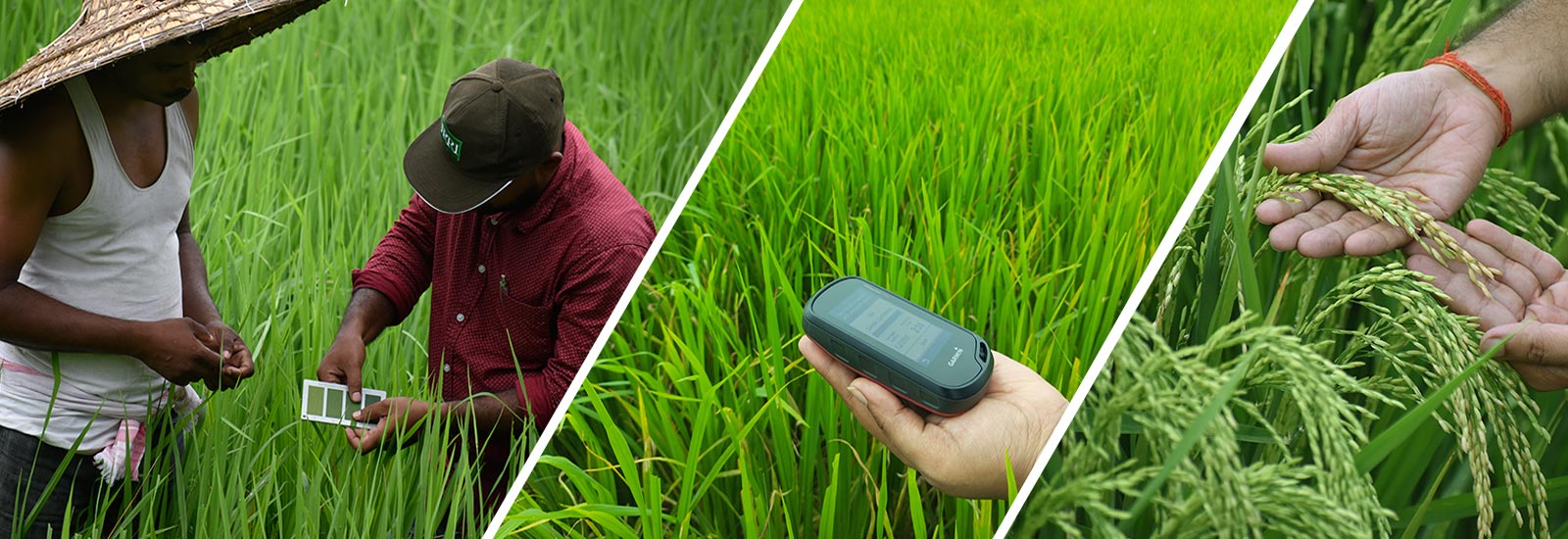Pests and Diseases
The majorinsect pests of rice crop include rice hispa, yellow stem borer, rice bug, brown plant hopper, leaf folders, caseworm, rice gundhi bug, gall midge and thrips. Rice hispa is abundant during Sali and Ahu seasons than in Boro. The incidence of brown plant hopper is relatively greater in the Boroseason. The rice bug is a major problem in ahu season, particularly in the early ahu crop. Caseworm is a localised pest and occurs more in the Sali season.
Many diseases infest rice plants in Assam, but the most important ones are sheath blight, bacterial blight and blast in Sali, blast and sheath rot in Ahu, and sheath rot and sheath blight in Boro. It is assumed that 15-20 % yield losses may occur in pest infested fields of rice. Although several cultural, mechanical,chemical and biological management practices are available for controlling insect pests and diseases, it is not known what percentage of the farmers use these technologies. One of the sustainable approaches to manage pest and diseases in the fields is to use the Integrated Pest management (IPM) approach. IPM integrates preventive and corrective measures to keep pests at a level from causing significant damage, with minimum risk or hazard to human and desirable components of the environment. IPM programs have proven track record of significantly reducing the risks related to pesticides, while improving quality, health & welfare of environment with increased productivity and reduced pest damage.
To limit pest and disease incidences in a rice crop, the following recommendations can be adopted.
- Practice proper cleaning of equipment
- Clean the field between seasons by managing stubbles and ratoons, and by maintaining and repairing bunds
- Use clean seeds and resistant varieties
- Certified seed is recommended. If certified seed is not available, use clean seed having no discoloured seeds, weed seeds or other rice varieties mixed in.
- Use short-duration and resistant cultivars to decrease insect-pest populations
- Plant at the same time as your neighbours (or within a 2-week window) to minimize insect, disease, bird and rat pressure on individual fields.
- Do not over-apply fertilizer. Following specific fertilizer recommendations is important because high nitrogen can increase susceptibility to certain pests and diseases
- Encourage natural pest enemies
- Overuse of pesticide is common among farmers, and can actually lead to pest outbreaks
- Natural enemies of rice pests are killed when pesticides are applied which can lead to a pest outbreak
- Do not apply pesticide within 40 days of planting
- Rice crops can recover from early damage without affecting yield
- Get appropriate information on specific diseases that require early management
- When deciding to use a chemical for pest and disease control, it is important to:
- Use well-maintained spray equipment that has been properly calibrated;
- Apply the dosage recommended by the manufacturer; and
- Follow the safety precautions for mixing and spray applications.


